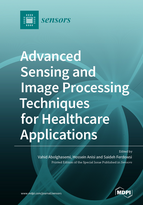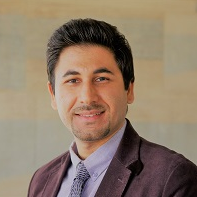Advanced Sensing and Image Processing Techniques for Healthcare Applications
A special issue of Sensors (ISSN 1424-8220). This special issue belongs to the section "Biomedical Sensors".
Deadline for manuscript submissions: closed (30 December 2021) | Viewed by 55140
Special Issue Editors
Interests: biomedical signal and image processing; compressive sensing; dictionary learning; blind source separation
Special Issues, Collections and Topics in MDPI journals
Interests: wireless sensor and actuator networks; body area networks; internet of things
Special Issues, Collections and Topics in MDPI journals
Interests: biomedical signal and image processing; data fusion; blind source separation and machine/deep learning; EEG; fMRI; ECG
Special Issues, Collections and Topics in MDPI journals
Special Issue Information
Dear Colleagues,
Developing new technologies for health and social care section have always been of particular attention to researchers. Additionally, recent increasing rate of aging population, particularly in developed countries, has doubled the demand of intelligent systems for the elderly. On the other hand, super-fast advances in technology and science has raised expectation of inventing new monitoring and assistive technologies for accurate and delay sensitive acquisition, processing, transmission, and interpretation of human’s physiological and behavioural data. Therefore, a variety of enabling techniques such as signal and image processing, machine learning, and compression techniques could be used to improve such systems and achieve the aforementioned goal. Therefore, the ultimate outcome would be increased quality of life and improving the healthcare services to the older populations.
This special issue aims to attract latest research and findings in design, development and experimentation of healthcare-related technologies. This includes, but not limited to, using novel sensing, imaging, data processing, machine learning, and artificial intelligent devices and algorithms to assist/monitor elderly, patients, and disabled population.
Topics of interest include but are not restricted to:
- Biomedical signal and image processing
- Smart monitoring and assisted living systems
- Deep learning for healthcare data
- Sensor fusion of biomedical data
- Compressive sensing of biomedical data
- Cloud/Edge/Fog computing for healthcare systems
- Smart phone-based vital signal monitoring
- Brain Computer Interface for disabled
- Wireless body sensor networks
- Risks and accidents detection for elderly care
- Activity recognition
- Big data analysis for healthcare applications
- IoT Applications in healthcare
- Sensors and actuators in healthcare systems
- Mental disorder detection
- Smart breathing activity monitoring
- Non-invasive glucose monitoring
Dr. Vahid Abolghasemi
Dr. Hossein Anisi
Dr. Saideh Ferdowsi
Guest Editors
Manuscript Submission Information
Manuscripts should be submitted online at www.mdpi.com by registering and logging in to this website. Once you are registered, click here to go to the submission form. Manuscripts can be submitted until the deadline. All submissions that pass pre-check are peer-reviewed. Accepted papers will be published continuously in the journal (as soon as accepted) and will be listed together on the special issue website. Research articles, review articles as well as short communications are invited. For planned papers, a title and short abstract (about 100 words) can be sent to the Editorial Office for announcement on this website.
Submitted manuscripts should not have been published previously, nor be under consideration for publication elsewhere (except conference proceedings papers). All manuscripts are thoroughly refereed through a single-blind peer-review process. A guide for authors and other relevant information for submission of manuscripts is available on the Instructions for Authors page. Sensors is an international peer-reviewed open access semimonthly journal published by MDPI.
Please visit the Instructions for Authors page before submitting a manuscript. The Article Processing Charge (APC) for publication in this open access journal is 2600 CHF (Swiss Francs). Submitted papers should be well formatted and use good English. Authors may use MDPI's English editing service prior to publication or during author revisions.
Keywords
- Biomedical Engineering
- Signal processing
- Image processing
- Machine learning
- Wireless sensor networks
- Internet of things
- Body area network
- Deep neural networks
- Dictionary learning
- Compressive sensing
- Big data
- Brain computer interface
- Artificial intelligence
- Healthcare technology
- Telemedicine








